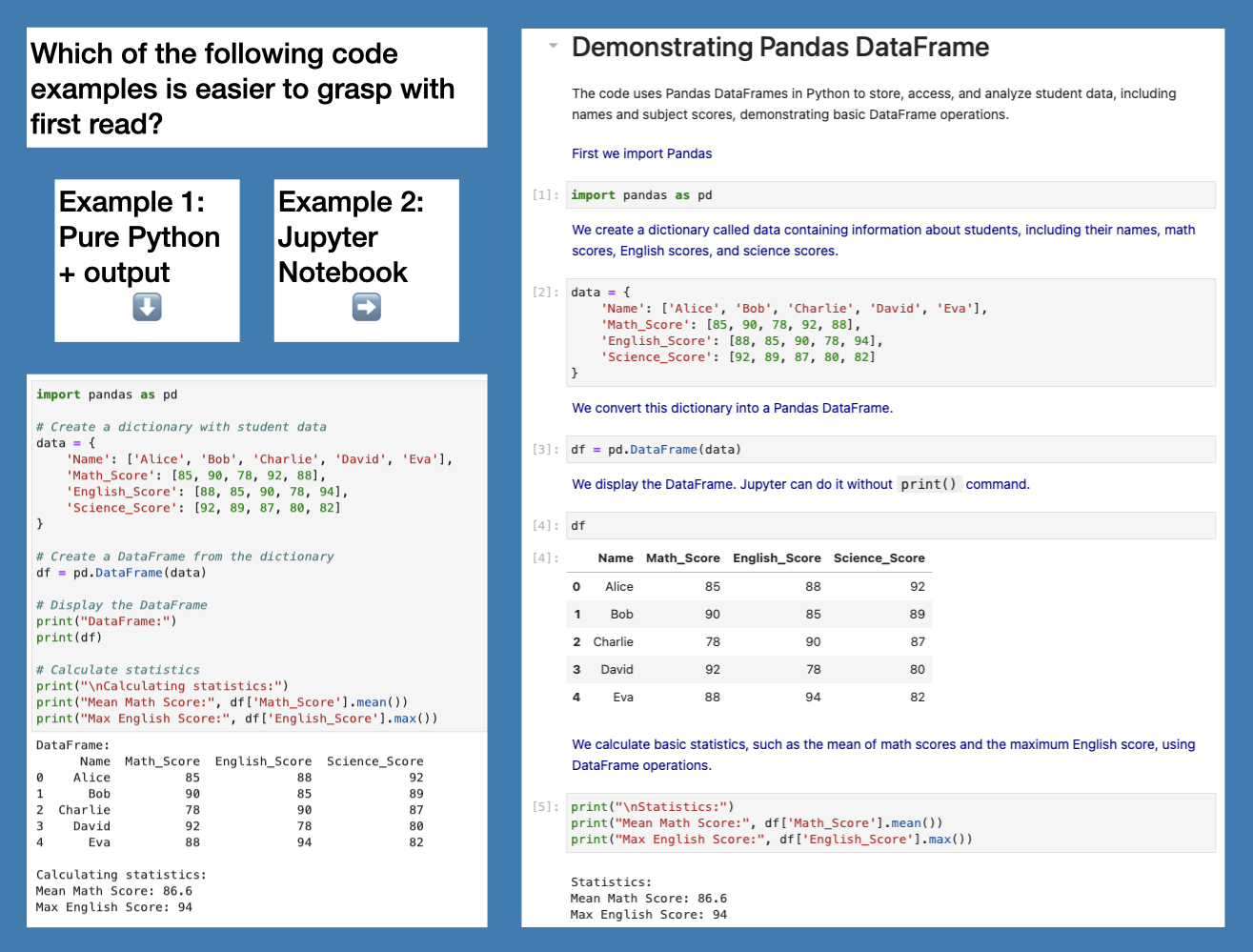Jupyter Notebooks
Objectives
Get an idea of the purpose of Jupyter.
See some inspirational Jupyter Notebooks.
Instructor note
10 min teaching
0 min exercises
Motivation for Jupyter Notebooks
Jupyter Notebook is a tool for creating and sharing documents that contain live code, equations, visualizations, and narrative text.

Jupyter Notebooks can contain much more than just regular code. (CC-BY).
Code, text, equations, figures, plots, etc. are interleaved, creating a computational narrative.
The name “Jupyter” derives from Julia+Python+R, but today Jupyter kernels exist for dozens of programming languages.
Jupyter Notebook-ish functionalities are widely used
Many tools can have Jupyter-like behaviour: code and markdown cells
VSCode
Google Colab
GitHub Codespaces
Case examples
Jupyter Notebooks make it feasible to share your code: you can explain your ideas and anyone can run the code eg. in Binder.
Gravitational wave discovery

Discovery of gravitational waves.
As a case example, let us have a look at the analysis published together with the discovery of gravitational waves. This page lists the available analyses and presents several options to browse them.
A quick look at short segments of data can be found at https://github.com/losc-tutorial/quickview
The notebook can be opened and interactively explored using Binder by clicking the “launch Binder” button.
How does the Binder instance know which Python packages to load? It takes the information from files like
requirements.txt(Python) orenvironment.ymlorruntime.txt(R).
Activity inequality study

Stanford Activity Inequality Study.
Researchers in the Stanford Activity Inequality Study measured daily activity from cell phone tracking data for over 700,000 users in different countries across the world.
All data and notebooks are available at https://github.com/timalthoff/activityinequality
Even without a “launch binder” button, the notebooks can still be launched on Binder (you may see an error “missing R kernel” because a file
runtime.txtis missing - more about that later)Do you see any potential problems in recreating e.g. fig3bc?
More examples
For further inspiration, head over to the Gallery of interesting Jupyter Notebooks.
Use cases
Really good for linear workflows (e.g. read data, filter data, do some statistics, plot the results)
Experimenting with new ideas, testing new libraries/databases
As an interactive development environment for code, data analysis, and visualization
Interactive work on HPC clusters
Sharing and explaining code to colleagues
Teaching (programming, experimental/theoretical science)
Learning from other notebooks
Keeping track of interactive sessions, like a digital lab notebook
Supplementary information with published articles
Slide presentations using Reveal.js
Pitfalls
Programs with non-linear code flow
Large codebase (however it can make sense to use Jupyter as interface to the large codebase and import the codebase as a module)
You cannot easily write a notebook directly in your text editor (but you can do that with R Markdown)
Notebooks can be version controlled (nbdime helps with that), but there are still limitations.
Notebooks aren’t named by default and tend to acquire a bunch of unrelated stuff. Be careful with organization!
See also https://scicomp.aalto.fi/scicomp/jupyter-pitfalls/.
Good practices
Rename notebooks from “Untitled.ipynb”.
Run all cells before sharing/saving to verify that the results you see on your computer were not due to cells being run out of order (we will try this later).